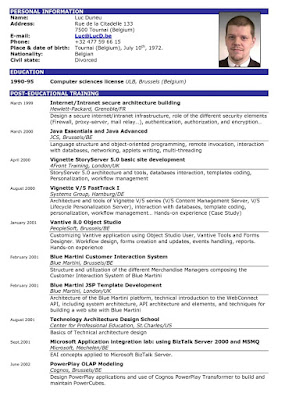How to Write an Effective CV / Resume
Difference in CV and Resume:
First of all we will know about the main differences in resume and curriculum vitae.
A Resume:
It is one page summary of your skills, education and experiences. This is not in detail and in very concise manner you have to tell about yourself in a particular manners and format.
A Curriculum Vita: (CV)
However in CV you have to explain about yourself in more detail. CV may be designed one to two pages about educational, academic backgrounds as well as any previous job experience, if any, awards, honors, publications, affiliations, and other achievements. It is more detail synopsis than a resume.
How to write and effective Curriculum Vitae (CV)/ Resume
There are some steps to write an effective Curriculum Vitae (CV)/ Resume, like:
Attach a Cover Letter:
A cover letter is a best resource to explain that why you are fit and suitable for such job. There is a separate format for designing a cover letter. This is not a detail discussion about your skills and knowledge, it just explain that you are good for a particular job.It carries a good effect on your respondent and makes your reputation batter rather than others those not enclose a cover letter.
Chose an Easily Understandable Format:
Try to design your CV/ Resume in understandable format. Because this is very important that what is you are going to discuss about you so it should be quite easy way for better understanding. This is a big mistake when you write a long paragraphing and chose very complex format of CV. Always try to choose easily understandable format. This push your reader for avoiding redundant effort on relevant finding according to your job description.
Write down Your detail:
There should be your detail about:
- Your full name: Always write your full name in your CV.
- Mention your address in bold fond.
- Give your phone number and email address on which you are available.
- Write your qualification in descending order that your current qualification comes first and then remaining.
- Mention your past professional experience, like your last job
- Write about your rewards and other achievements, if any, but always write correct information.
- Any sort of computer skills should be mentioned.
- Interest and hobbies heading also be there and this is very important portion of CV because this area shows your psychology.
- In last, write down your references, if any.
Usual Mistake Is Done By the People While Designing CV / Resume So, Be Careful
There are some common mistakes are done by people when they are designing CV/ resume and it carry adverse response. Therefore you be very careful about your presentation. These mistakes are:
Cover Letter Is Missing:
Some of the people missed to attach a cover letter along with their CV. So this is also a lacking and to enclose this letter getting impressive image in sight of your respondent. So must try to enclose a cover letter at first of CV.
Choosing Complex format:
Sometime people chose complex and very abstract format of CV. It contains overloaded information in paragraphing form rather than a bullet form. A CV should be in very distinct manners; and easy to understand.
There are two sample for showing the difference.
Not an Impressive Way
Impressive way
Grammatical Mistake:
There are some grammatical mistakes are done by people and this carry not a good effect. So avoid such flaws in CV. Be sure about the correct use of grammar and always try to focus in the 7 C’s. Properly check the spellings and follow grammatical rules also. Because just due to use of wrong grammar you may lose your job call because this carry very bad impression over your respondent, specially when you are applying in big and renowned organizations.
Overloaded Information:
Try to give information in very concise manner and try to avoid same word again and again. Use substitute word especially when you are writing cover letter. Try to provide required and relevant information only. In fact when you are applying in various fields then you have to mention relevant information in CV. Like if you are applying for marketing job then just mention your marketing experience, skills and knowledge. There is no need to write down about your teaching experience and skills. This is very common mistake mostly people do that they design only one CV and sent this CV to every organization. This is not a good CV because in one CV you divulging all skills, experiences and knowledge. Therefore avoid this habit.
Avoid Writing Fake Information:
Sometime people enclose fake information about their self and they write their fake hobbies and interest. While, this portion of CV is very much important and your respondent must read this portion, because this heading tells your psychology. If you mention wrong and fake information there this may be trace in interview when your receiver asks questions from you about your hobbies and interest. Like if a person who play table tanes / Squesh and suppose your interviewer also fond of this game so if he ask any rule and this thing about your playing style and you are not knowing about such game rules so this thing become embarrassing and also give wrong impression that may be reaming information is also not genuine. Therefore, do not enclose fake information about yourself.
Great Thanks to My Respected Professor,
Khalik-ur-Rehman
( to whom I took my session for improve my professional writing skills)
Great Thanks to My Respected Professor,
Khalik-ur-Rehman
( to whom I took my session for improve my professional writing skills)













